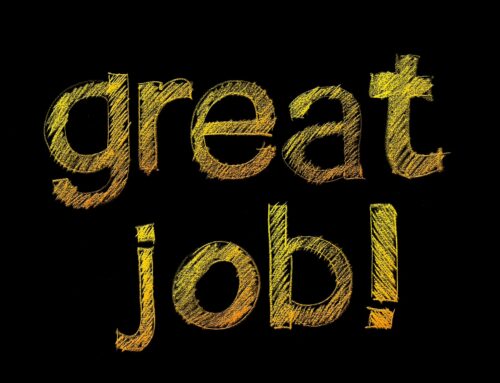“It’s not hard to make decisions when you know what your values are,” Roy Disney said.
Identifying core values helps individuals and companies make decisions that chart the course for the future. Conversely, lack of attention to values can completely derail your life or your firm because there is no over-arching global positioning system to create a route or destination you can live with.
Values were at the core of a controversial New York Times article titled “Inside Amazon: Wrestling Big Ideas in a Bruising Workplace.” The piece described a revolving-door management style where employees are winnowed down by an assault on their professional and personal lives.
“Many of the newcomers filing in on Mondays may not be there in a few years. The company’s winners dream up innovations that they roll out to a quarter-billion customers and accrue small fortunes in soaring stock. Losers leave or are fired in annual cullings of the staff—’purposeful Darwinism,’ one former Amazon human resources director said. Some workers who suffered from cancer, miscarriages and other personal crises said they had been evaluated unfairly or edged out rather than given time to recover,” the article said. The company was reported to be “conducting a little-known experiment in how far it can push white-collar workers, redrawing the boundaries of what is acceptable.”
Vivid portrayals of an environment where people regularly “weep in the office” led to debates about the personal cost of innovation. The article compared Amazon, which “offers no pretense that catering to employees is a priority,” to other Internet giants like Google and Facebook that motivate employees with gyms, meals and cash handouts for new parents. Amazon CEO Jeff Bezos responded to the article in a memo, published on GeekWire.com, stating, “The Amazon described in the article may have existed in the past … but it is definitely not the Amazon of today.” He also said that a person would be “crazy to stay” in a company like the one described by the Times. His lack of certainty about employee depictions coupled with utter condemnation of anyone who chose to stay presents an interesting dichotomy. This conveys a complete absolution of responsibility because employees are free to leave at any time if they don’t like the working conditions. And that is true. Anyone who can get a job at Amazon can likely get one elsewhere. We all make choices even when we think we have none. Amazon made a choice and the employees who stayed on did as well.
To a coach who works with professionals trying to achieve work-life balance without sacrificing success and with leadership responsible for ensuring their firms remain competitive, the Amazon story presents the perfect crucible for exploring questions that we all must ask ourselves in our careers. These questions are relevant regardless of your position because it’s important for an employee to see things from the employer’s perspective and vice versa. How do you define success? How important is status, pedigree and prestige? What are you willing to endure for the resume value of working for a renowned firm? And, assuming that innovation at the highest level may come at great personal cost to those who conceive and implement it, can steep standards coexist with kindness? Is there room in cutthroat competition for empathy? If people are putting in 80-hour weeks, how might it benefit an employer to offer some intangible, emotional benefits? Is constant turnover an acceptable outcome or productivity pitfall?
Everyone has values, whether you are aware of them are not, and they are generally reflected in your choices. To the extent that inconsistent values coexist and compete, you must constantly evaluate what’s most important. Time is limited, so agreeing to do one thing simultaneously prohibits you from doing another. It is essential to establish what your values are to help make decisions that will move you forward in the direction you desire, and to be careful that it’s the path you choose, and not selected for you by others, by perceived societal norms, or by default.
One of the biggest decisions is your career, because a significant amount of our lives is spent at work. Professionals are often in the position of weighing money against freedom to varying degrees, so that is worth having on your radar screen. Do you want to be chief counsel? Partner? If so, begin setting your life up so everything will be aligned with that goal. Don’t embark on inconsistent pursuits that will guarantee failure in both. Decisions require sacrificing certain things in favor of others, so it’s important to choose thoughtfully and strategically.
Amazon paid attention to establishing core values, creating a list of 14 “leadership principles” (www.amazon.jobs/principles). The first is customer obsession: “Leaders start with the customer and work backwards. They work vigorously to earn and keep customer trust. Although leaders pay attention to competitors, they obsess over customers.” Merriam-Webster defines the word obsess as “to haunt or excessively preoccupy the mind.” Zappos, another Internet retailer, has a list of values and the first one is similarly consumer-oriented:
“Deliver WOW Through Service.” How does that compare in your mind to Amazon’s? What does the verbiage say to you about each company? An inquisitive look at the philosophy of the organization embodied in these statements reveals a lot about what to expect. How do they align with your values?
Many mistakes can be avoided by being attentive to values and preferences, such as what job to take or where to live. One of my clients complained bitterly about her commute. She hated driving: It took too long, and robbed her of time she could be spending on other things. Sometimes she took the train, and found it way more enjoyable, but had been unable to make it a habit because it required attention to time tables. Understanding that the train runs on its own schedule and not hers, I asked how she could take the train more often and what impact that would have on daily life. Most choices in life are not all good or bad, requiring discernment of what will bring the most satisfaction. She had to look at the value she put on being in charge of her departure times compared with the value she puts on finding opportunities for learning and entertainment. Ultimately, she started riding the train, began watching the time when she needed to, and got two hours a day back to read, work, or just think. This habit change was instrumental in building a happier life without any loss of productivity and involved only slight concessions for enormous impact.
To assist in identifying your values, “The Portable Coach” by Thomas Leonard provides guidance to distinguish between needs, wants and values:
- If there is urgency, it is probably a need.
- If there is craving or desire, it’s probably a want.
- If there is a natural uncomplicated pull, it’s probably a value.
When you are mindful of your values, decision-making is simplified. For example, if spending time with your family is a core value, then taking a job that requires 80 hours a week is a bad decision for you and the employer. There may be some great reasons to do it, but if you ignore that gut feeling telling you not to, you will probably be sorry if you do.
Many firms do not have a mission statement posted online, but there are other ways to discern culture. Read everything you can about the partners and firm. Arrive early and look for cues when you interview. Listen carefully to the questions they ask you. They tell a lot by what they ask. Pay attention to the office environment and ask around.
Most importantly, if you made a decision you’re not happy with, you can always make another one. Don’t allow yourself to be unnecessarily bound. You may work for someone else, but you are the commander of your life. Let your values lead you in the right direction.
Reprinted with permission from the October 29, 2015 edition of “The Legal Intelligencer” © 2015 ALM Media Properties, LLC. All rights reserved. Further duplication without permission is prohibited. For information, contact 877-257-3382, reprints@alm.com or visit www.almreprints.com







